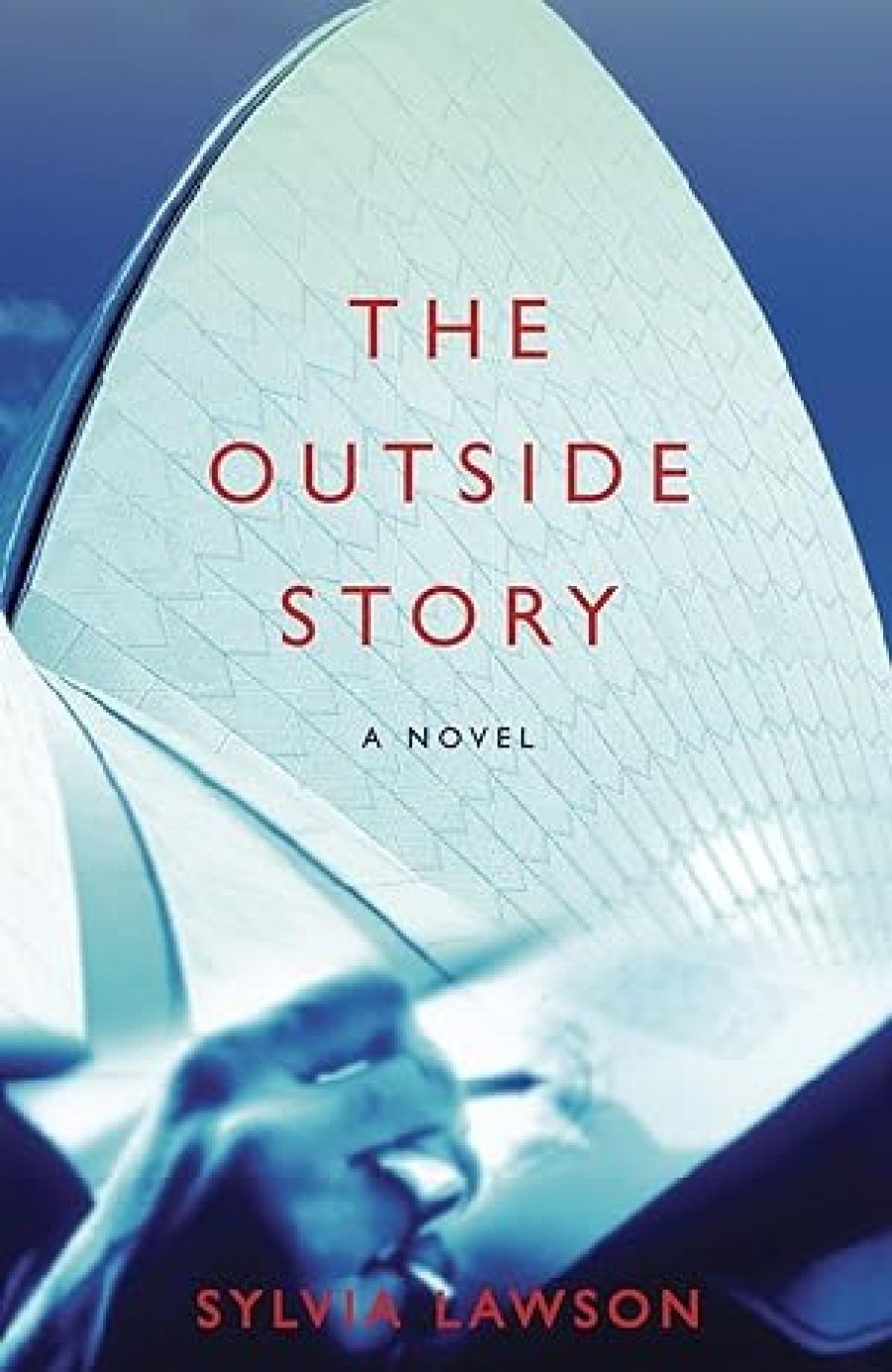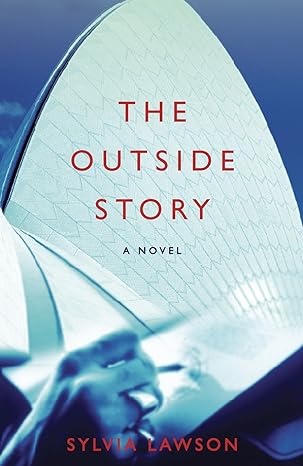
- Free Article: No
- Contents Category: Fiction
- Review Article: Yes
- Article Title: Utzon’s Outside
- Online Only: No
- Custom Highlight Text:
Sylvia Lawson is a distinguished cultural critic and essayist. Her award-winning The Archibald Paradox: A Strange Case of Authorship was published in 1983, and her collection of essays, How Simone de Beauvoir Died in Australia, won the 2003 Gleebooks Prize for literary and cultural criticism. In selecting the latter volume among my best books of 2002 for the Sydney Morning Herald, I claimed that it was characterised by ‘complex, spacious, committed, convincing, intellectually riveting speculations and reflections’. Many of these qualities may be found in The Outside Story.
- Book 1 Title: The Outside Story
- Book 1 Subtitle: A novel
- Book 1 Biblio: Hardie Grant Books, $27.95 pb, 285 pp
- Book 1 Cover Small (400 x 600):

- Book 1 Cover (800 x 1200):

There is a point to this apparent ageism. Lawson, it seems fair to say, is not a born novelist, and is writing about an issue – the betrayal of the ideals represented by the actuality of the Sydney Opera House, especially its interior – to which she is passionately committed and upon which she has been working for at least a decade and a half, as her endnotes and acknowledgments attest. At one stage, she hoped to make a film on the project. Her novel features two narrators, both obsessives, the second of whom speaks of the first in the second person for the book’s first half. Two women; two theses. Thus, the novel often reads like a dramatised academic lecture whose subject matter is a dramatised academic lecture. One cannot help feeling that from behind the tyro novelist an accomplished essayist is peeping out, striving to conceal herself.
The thesis which the student – a mature-age student, who suffers all the burdens and resentments of that category – produces is variously described thus: ‘The concern of this thesis is with the early political history of the Sydney Opera House, covering developments from 1954, when the NSW State government announced a firm commitment to the project, to 1966, when the architect Joern Utzon and his staff withdrew from it’; or ‘Building a Secular Cathedral: the Sydney Opera House, 1957–1966’; or ‘Culture and Anarchy’ (rejected working title). Lawson has been wise in choosing to dramatise her extensively researched (see the bibliography) material through theses, thesis writers, academics and students, for this both permits the essayist to articulate her dianoetic concerns and makes possible a polyvocal text that a work of non-fiction might have denied. It is perhaps illuminating to think of The Outside Story as a cousin of such American works of fiction as Elizabeth Hardwick’s Sleepless Nights (1979) and Renata Adler’s Speedboat (1976), ‘bio-fictions’ by eminent essayists who cast fictional versions of the self at the core of their novels.
But Hardwick’s and Adler’s narrative patterns are centrifugal, whereas Lawson’s are centripetal, which may suit obsessive characters, but which can also be stifling. The fact that everybody in this novel knows everybody else contributes to a sense of dramatic claustrophobia and coincidence, signs of an uncertain novelist. Yet the novel wishes, or wishes its readers, to extrapolate from its closed circles.
The interiors [of the Opera House], whatever their merits, represent a moment when timidity, meanness and banality overcame generosity and courage. This is unavoidably the business of the society which benefits from the building’s existence and exhibits its image. There is a view that in the building’s fractured, contradictory nature, and the inner betrayal of its outside promise, it is only too accurate a symbol for a society which parades its health and adventurousness, yet fails in so many areas of justice.
That reading of the Opera House is certainly more convincing than that offered by the other woman, the narrator: ‘On a concrete parking lot people are fighting viciously, one high vault of the Opera House looming aslant above them like the great vagina of their fears.’
The Outside Story, concerned with the inside/outside dichotomy, is no less concerned with feminine/masculine, and may provoke reflection upon gender difference in reading. The novel is both a social history of feminism and of social/intellectual movements it subsumed – women’s reading groups and history groups, for example – and what is distracting to this reader may not be to others. One man’s sense of a distracting political correctness may be another woman’s social realism. One of the student’s, now part-time teacher’s, essay topics encountered on the first page suggests the concerns of both the novel and of the 1970s: ‘“The architect is male.” (Boyd 1966). Discuss the past and present positions of women in architecture and the related professions.’ Yet – and I’m uncertain that ‘yet’ is the right connective – so many of this novel’s strengths are those traditionally held to be of fiction by women: warmth, the domestic sphere, social meliorism, passion. Significantly, perhaps, the ‘good’ blokes in the book are not careerists, while academic, professional patriarchal malfeasance is writ large.
The central proposition of this novel is: ‘That is where the important life of the building is, on the outside. It is the outside that counts. The outside is Utzon’s.’ The important life of novels, on the other hand, is on the inside, and one may ask whether The Outside Story possesses sufficient interiority, dramatised rather than told. The latter is what essays do.


Comments powered by CComment